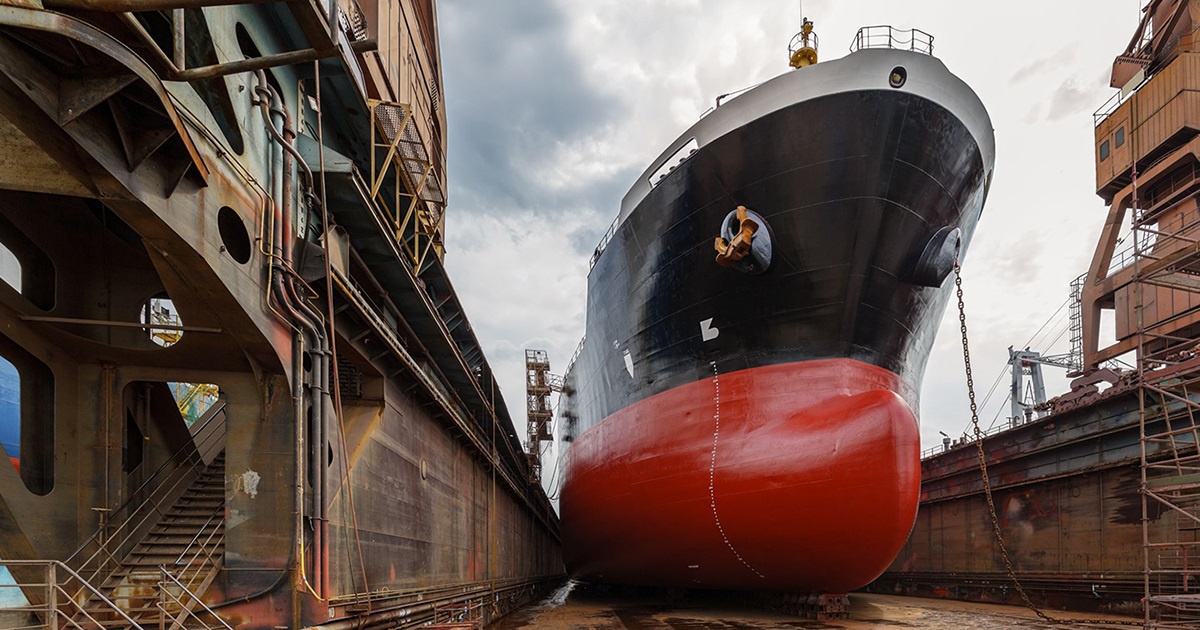
Podcasts

This podcast was generated with AI based on a human-written text (the Source text further down on the page). The list of key takeaways was generated with the help of AI based on the same, human-written text.
Key takeaways
- Proper engine maintenance helps reduce methane slip. Three engine areas are particularly important:
- Charge air system (coolers, turbocharger)
- Cylinder unit components (proper maintenance can reduce fuel consumption by up to 1%)
- Fuel injection system (particularly the gas emission valve) - Hull cleaning is essential and can have a high impact. Even minimal bio-fouling (0.5mm covering 50% of hull) can increase greenhouse gas emissions by 20-25%.
- Leveraging performance data helps identify opportunities for optimising maintenance. Maintenance can be targeted to maximise efficiency and minimise emissions.
Source text
Why good maintenance is a powerful tactic to cut methane slip from ships
Good maintenance practices are a powerful tactic to cut methane slip from ship engines that use LNG as fuel. But what do you need to pay special attention to, and how much could you save in greenhouse gas emissions?
Going back to basics with your LNG engine is a great way to reduce methane slip – the methane that remains unburned and escapes into the atmosphere through the vessel’s smokestack. Powerful tactics like this will reduce greenhouse gas emissions, including methane, and have huge benefits for ship owners and operators.
Keep your vessel in good shape
Good basic maintenance is simple common sense. In a nutshell, if your vessel is well maintained and has a clean hull, you’re going to save on fuel and generate less emissions. Let’s start by looking at the engine and the components that have a direct impact on how much fuel your vessel uses.
Focus on three key engine areas
There are three key areas that affect how much fuel your vessel’s engine uses, and therefore the amount of greenhouse gas emissions, including methane slip, it produces.
- The charge air system: This system includes big components like the charge air coolers and turbocharger. With this system you should:
a) Adhere closely to the maintenance schedules.
b) Monitor pressure losses over the charger cooler and clean the cooler regularly to maintain performance.
c) Monitor the backpressure after the turbocharger and regulate the charge air cooler capacity to ensure it remains as close as possible to the dew point.
d) Pay close attention to the turbocharger cleaning interval to prevent the buildup of combustion particles.
e) Check the exhaust wastegate regularly, as this ensures the correct amount of air is supplied for combustion. - The cylinder unit: The cylinder unit includes the cylinder heads, piston, piston rings, valves, liner, bearings and rotating components. Keeping all these parts in good working order will help you to avoid unpleasant, costly and time-consuming surprises. You can reduce your fuel consumption by as much as 1% by making sure your cylinder unit components are well maintained.
- The fuel injection system: In dual-fuel LNG engines the key component in terms of good maintenance practices is the gas emission valve. A poorly maintained valve can increase total hydrocarbon emissions and cause operational problems that could result in downtime.
Keep your hull clean
Just like in our homes, some good housekeeping on a vessel keeps things moving smoothly and efficiently. Hull resistance is one of the most significant factors impacting the efficiency of vessels when sailing. You should clean your vessel’s hull regularly to remove bio-fouling – the buildup of microorganisms, plants and algae.
If you don’t perform regular hull cleaning, the increased roughness of the hull will increase the ship's hydrodynamic drag. This will mean speed losses at constant power or the need to increase power to maintain a constant speed. Both have a negative economic and environmental impact. You might be surprised to learn that, according to a 2022 study by GloFouling Partnerships, a layer of slime as thin as 0.5 mm covering up to 50% your vessel’s hull surface can increase greenhouse gas emissions by a huge 20 to 25 per cent. So, it certainly makes sense to keep your hull clean.
Take advantage of data
Knowledge is power. The more you know about how your ship is performing and the status of the equipment and systems onboard, the better you can maintain them properly and keep them running efficiently. After all, the less fuel you burn, the less emissions you produce. With the right data you can identify where and how you can optimise engine efficiency. Lots of small improvements added together can result in big fuel savings and significant emissions reductions. Wärtsilä is the ideal partner to help you identify these improvement areas, including how to reduce methane slip.